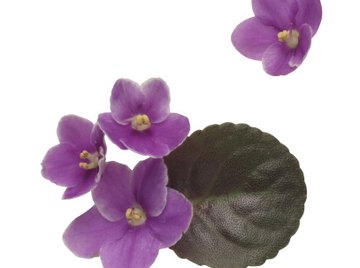
What is it called when a plant grows from a leaf? A type of asexual reproduction, this type of plant propagation is called leaf cutting. Many houseplants can be propagated this way, especially those with fleshy foliage. Because propagation methods involving leaves are asexual, the offspring of the mother plant is genetically identical to the plant from which the leaf cutting was taken. Plants that grow from leaves are called clones. While plants that grow from seed have genetic material from two parents, clones are exact replicas of their mother plants. There are many different types of plants that reproduce through leaves, and there are several types of leaf cutting methods. The best propagation method will depend on the plant species.
General Propagation Methods
Regardless of the exact leaf cutting approach used, the other conditions needed to successfully propagate a plant from a leaf are similar. Small pots should be used for each leaf cutting. Propagation media with adequate drainage and moisture holding capacity, like a 50:50 mix of perlite and peat moss, will be needed for the leaf to grow roots in.
A leaf cutting will also need adequate light, like on a windowsill or near a window. Ideally, the temperature during the day should be 70 to 75 degrees Fahrenheit for success with leaf cuttings.
The propagation medium needs to be moist but not soggy; a humid location will help keep the pot and leaf cutting from losing too much moisture. Using a plastic covering over pots with leaf cuttings can help keep them humid, but care must be taken to also provide ventilation.
Plants That Grow From Leaves
As mentioned, there are several types of leaf cuttings. The most simple involves a leaf and petiole. A leaf is the broad, flattened, fleshy part of a plant; a petiole is a leaf stalk, or the part that attaches a leaf to a stem.
Plants that reproduce from leaf-petiole cuttings include peperomia, episcia, hoya and sedum. This method involves simply cutting a leaf off a mother plant along with an inch or two of petiole. The petiole is then inserted into the growing medium in a pot and cared for as described above.
In other cases, plants can be propagated through leaf cuttings without petioles. Plants that reproduce in this way include snake plant (Sansevieria) and African violets. Cuttings are inserted vertically into the growing medium, with new plants emerging from the midvein of the leaf cutting.
In some cases, a growing medium is not required, as leaf cuttings will root in a jar of water. Plants that grow from cuttings in water include begonias, coleus, ivies, basil and lavender. Rooting hormone may also be used to encourage new growth. This method involves rooting a small section of stem in water, then moving the rooted cutting to a pot filled with growing medium.
Other Vegetative Propagation Methods
Besides leaf and stem cuttings, there are several other ways to vegetatively propagate various plants. Many herbaceous plants, shrubs and trees may reproduce asexually through leaf-bud cuttings, cane cuttings or root cuttings.
Leaf-bud cuttings are often used for vines and shrubs like clematis, rhododendron, jade plant, devil’s ivy and grape ivy. Essentially, this method involves a cutting that consists of a leaf, its petiole and a small piece of stem with a bud on it. The cutting is placed in a pot with the leaf exposed and the bud buried by the propagation medium.
Cane cuttings are often used for plants like corn plant and Chinese evergreen. A section of leafless stem is placed in a pot with half the cutting covered by growing medium. New shoots will emerge from buds on the stem.
Root cuttings are often used for woody plants like phlox, crabapple, fig, lilac, sumac and rose. This method involves removing a section of root from an established plant and burying it in soil or in a pot. Root sections will develop shoots, which will then grow their own root systems.
References
About the Author
Meg Schader is a freelance writer and copyeditor. She holds a Bachelor of Science in agriculture from Cornell University and a Master of Professional Studies in environmental studies from SUNY College of Environmental Science and Forestry. Along with freelancing, she also runs a small farm with her family in Central New York.
Photo Credits
Brand X Pictures/Brand X Pictures/Getty Images
